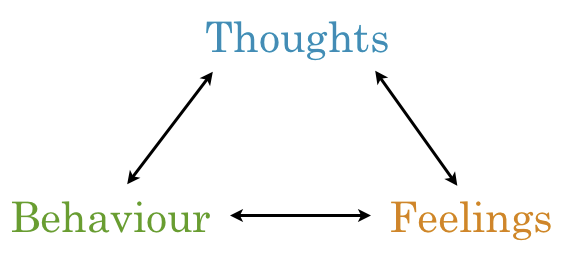A tool to help you to be aware of your negative thoughts and shift towards a more balanced way of thinking.
Why is realistic thinking helpful?
Our thoughts, feelings, and behaviours are all tied together. Often our thought patterns may be negative and as a result, make us feel stressed, depressed, or anxious. Realistic thinking is a technique used in Cognitive Behavioural Therapy (CBT) to help bring awareness to our thoughts and challenge them, in order to bring ourselves to new and more helpful ways of thinking.

How to do realistic thinking
- The first step is to be aware of your own thoughts. What kinds of thoughts are you having? Do you notice any patterns around your thoughts?
- Next, identify the thoughts that make you feel bad in any way. Not all thoughts that make you feel bad will be problematic and need to be challenged. Some thoughts will be a natural and normal reaction, like grief. Others may not be realistic, for example, you might do poorly on a test and then think you're going to fail school and become homeless. This is an example of a problematic thought that you may want to challenge. Look for thoughts that fall under the "thinking traps", for example, overestimating, all or nothing thinking, or negative filtering.
- Challenge the negative thought! Try to look at the thought in a realistic and balanced way. Here are some questions to ask about your thought in order to challenge your negative thinking, including: "What is the worst that could happen?" and "Have I confused a thought with a fact?".
- Now that you've challenged your thought, replace it with a more balanced thought. Since your thoughts are closely linked to your feelings, this can help you feel better. Encourage yourself through positive statements about yourself and coping statements.
- Try writing down any parts of this process down on paper to look over and help you cope.
This material was modified from and with the permission of AnxietyBC.

